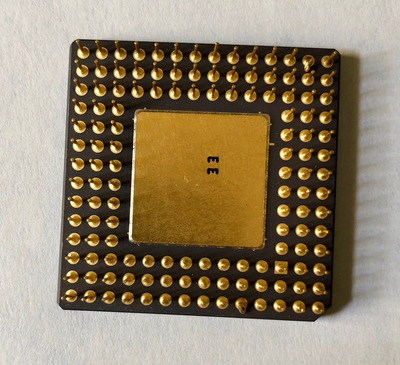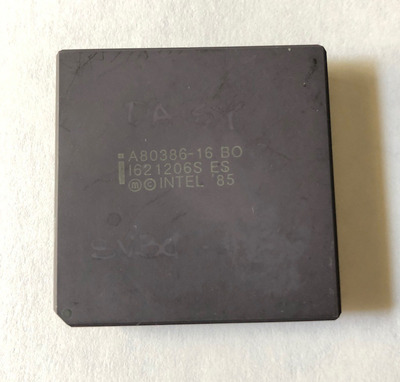Agree ! You may have one of the only ones that are still in the hands of someone to Document it (recyclers do not care !)
Sure. I'll post it over there tomorrow. I am really happy that I was able to snag it before a recycler or anyone else did. I want to drop it into a 386 board and see which bugs it does have. 😀
It seems like it has had an interesting life. There are a few hand-made ink markings on the ceramic that have been mostly erased. One of them reads "DAISY".
You should find the 12MHz version.
I WISH!
If it was tested and does have the bug, it will say "16-bit software only".
I also really want to find one of those chips that is officially marked like that.
This CPU is an early stepping that probably does have the bug.
Yes. The officially released B0 step 386s had a number of bugs. (It wasn't until the D-step that the 386s were solid.) So I do suspect that since this is an engineering sample of a B0 step then it should have the 32-multiply bug, among a list of others. Of course, I think that's a good thing. It's part of the history of the evolution of the 386.

